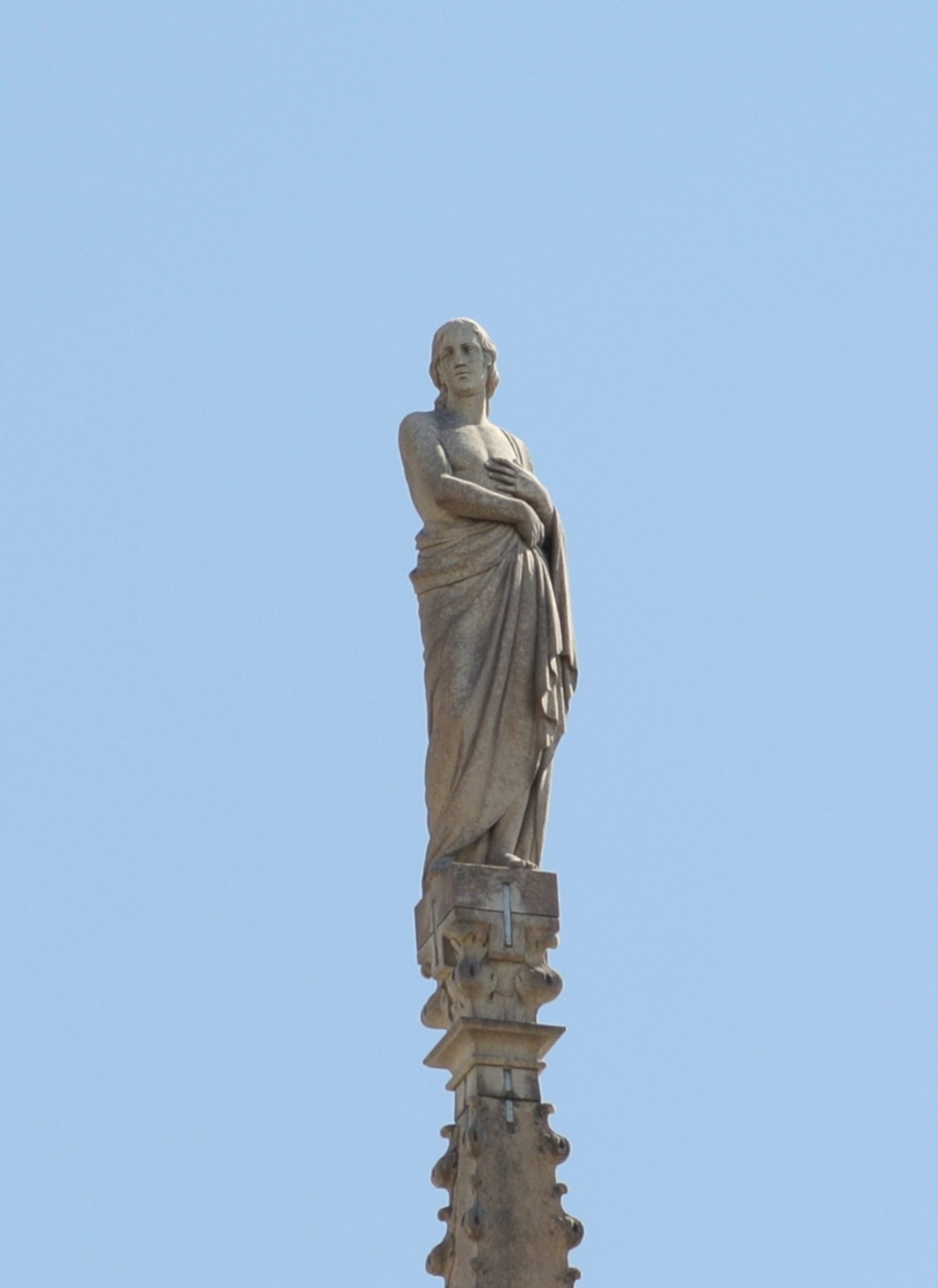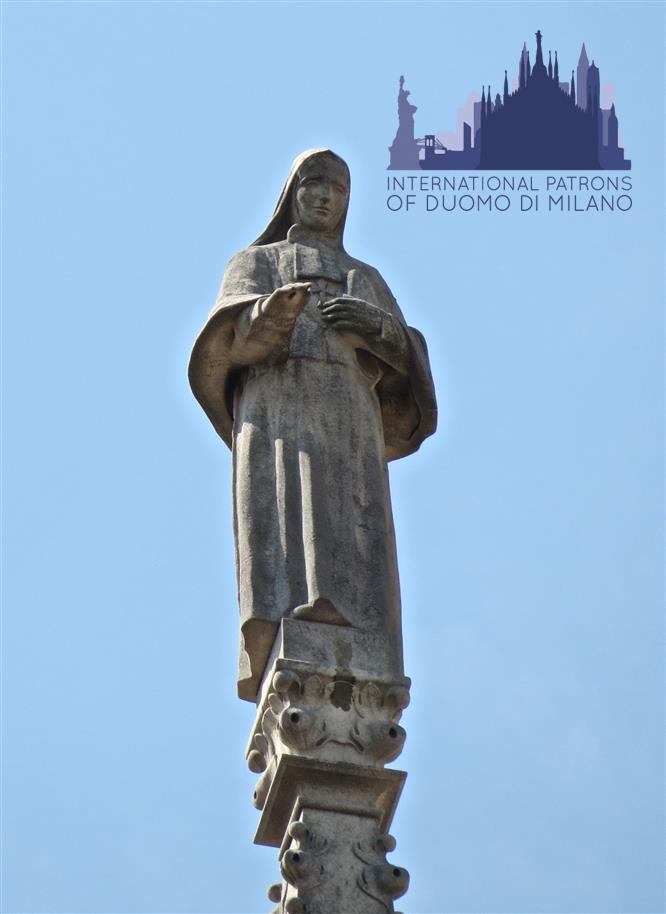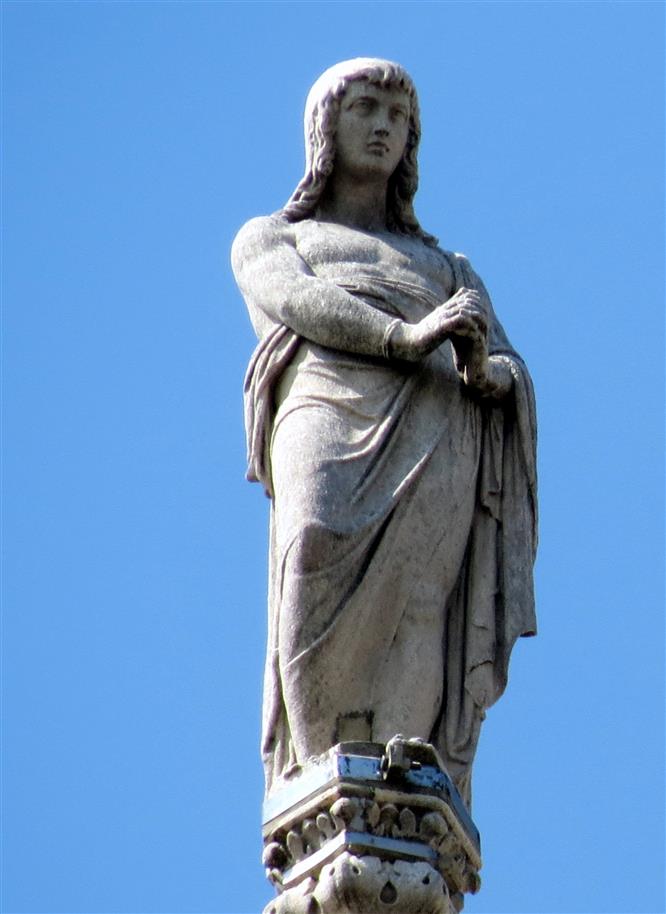Acindino is one of the martyrs from Persia who are named in a Greek passio of the 7th century. The story narrated in this text takes place in the 4th century in Persia, where, despite the freedom of worship granted by Constantine, persecutions against Christians still raged. The king had the opponents captured, including Acindino, subjected them to interrogation and torture, but then they were spared, as the chains that held them miraculously melted. The torture did not stop, but the martyrs emerged unscathed from various tortures. Acindino’s martyrdom ends around the 350, when he was burned alive. The relics were then moved to Constantinople and worshipped in a church dedicated to them. These martyrs are particularly venerated by the Byzantine church in particular.
The tales of the statue in Dome’s building site:
Both the model and the original statue of San Acindino were created in 1834 by the sculptor Pompeo Marchesi.
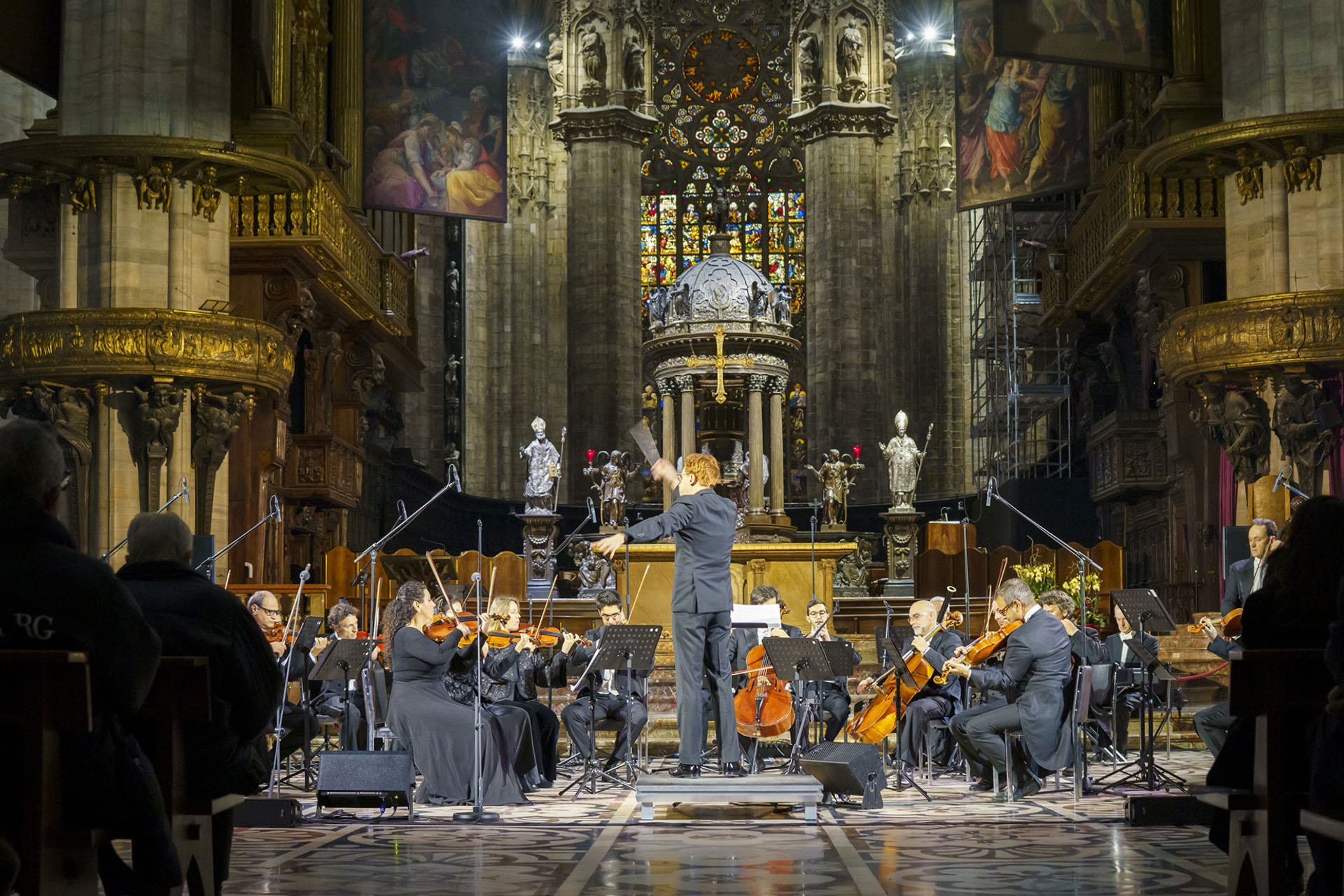
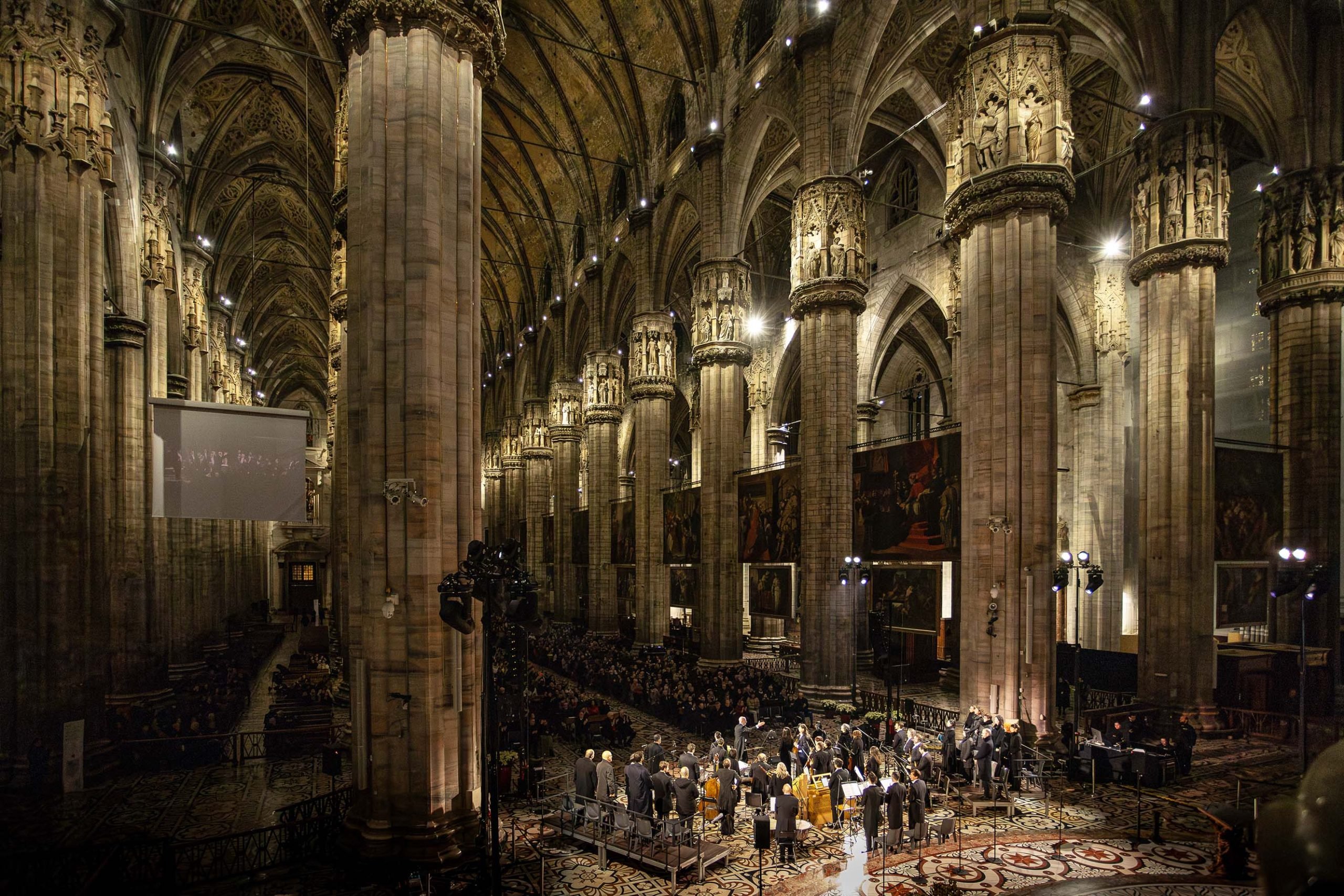
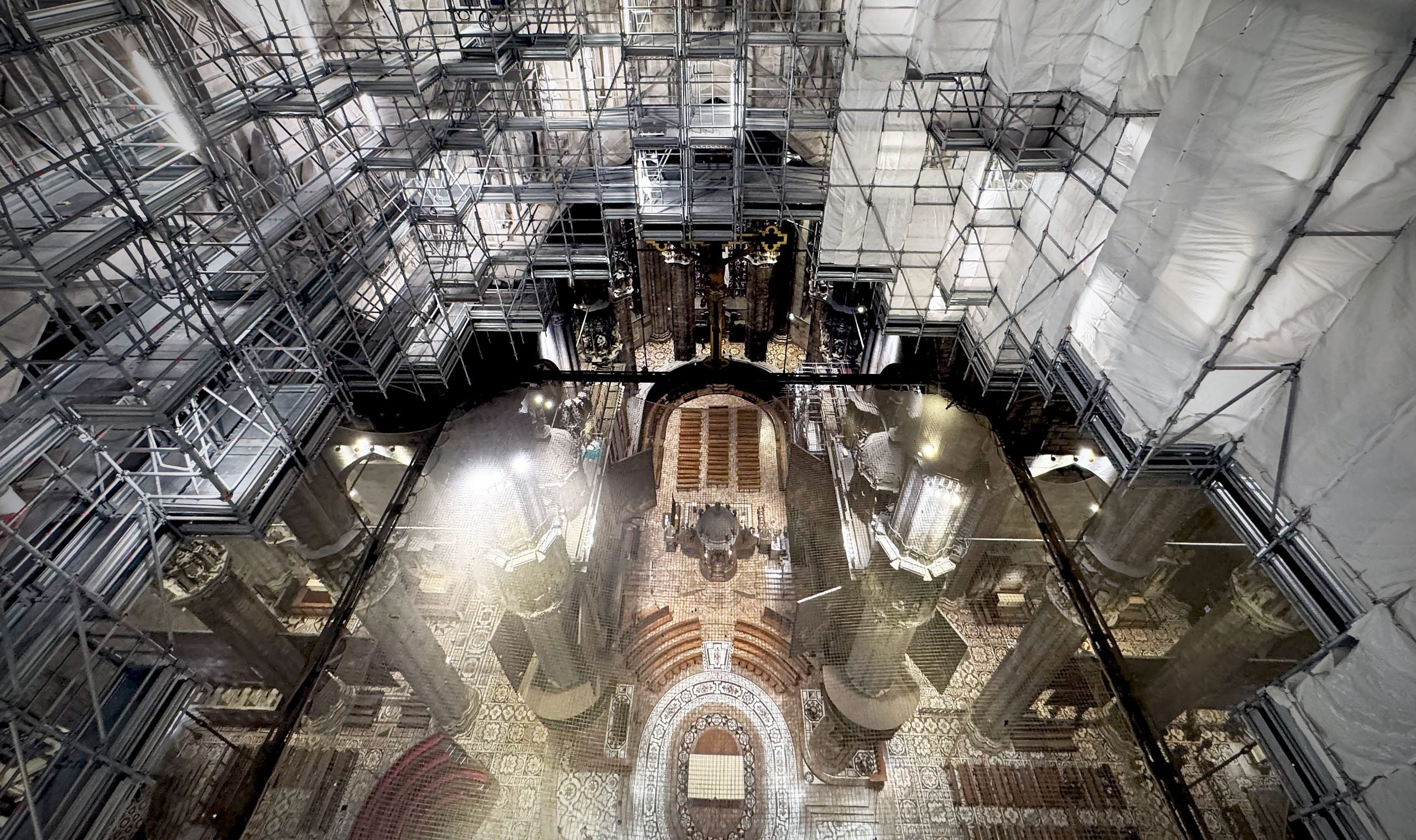
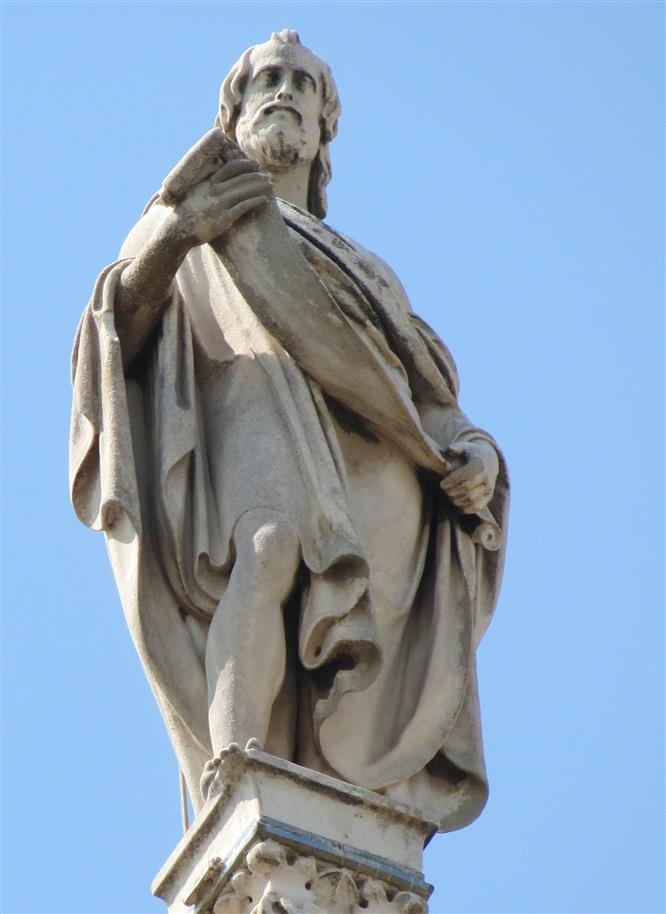
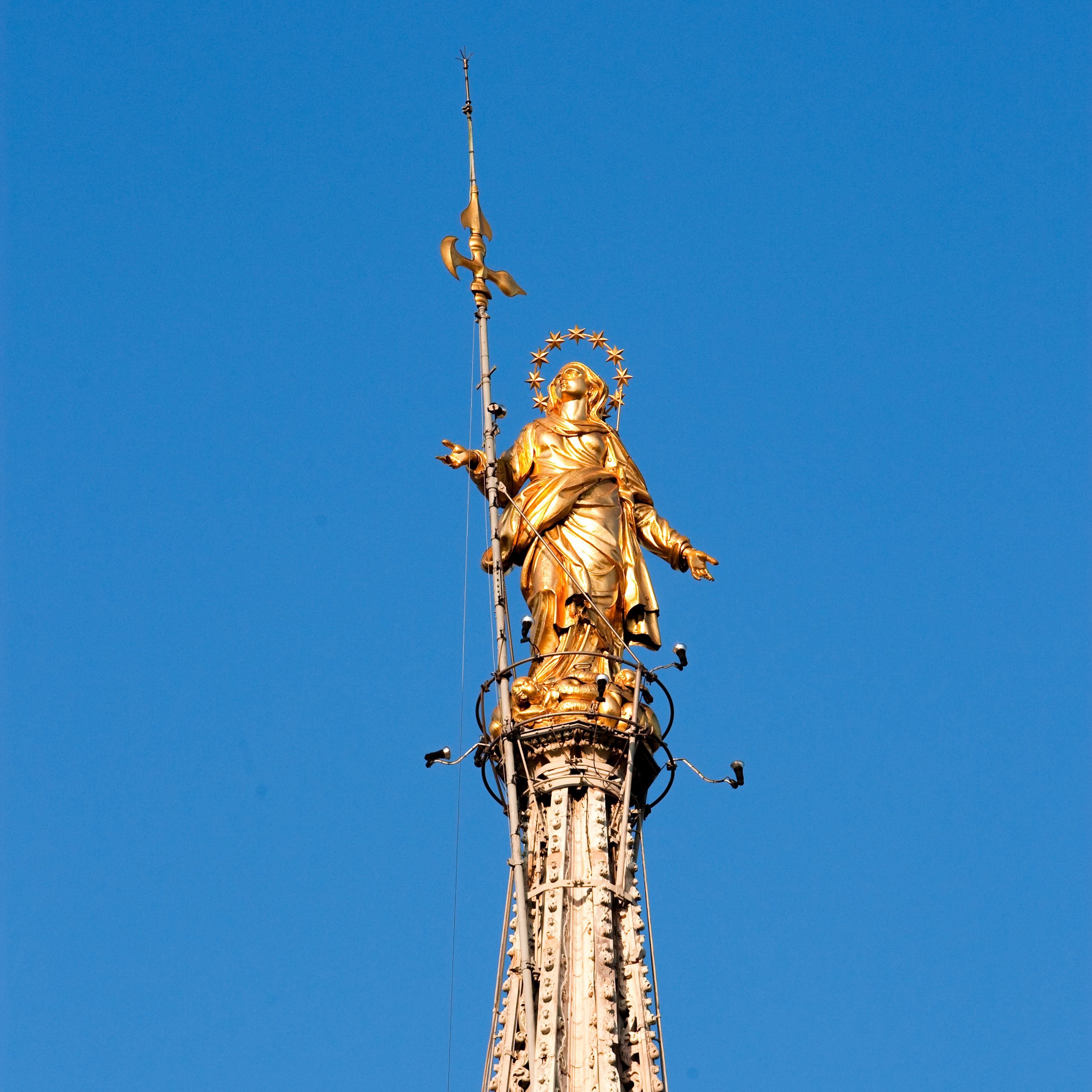
 Tiburio
Tiburio